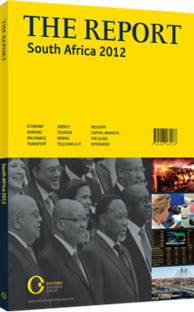Sappi: Paper & packaging
THE COMPANY: Sappi is a paper and packaging company, with headquarters in South Africa and listings on the Johannesburg Stock Exchange (JSE) and New York Stock Exchange (NYSE). It has operations in: (i) Southern Africa (29% of group operating profit for fiscal year 2011 to end-September 2011 and with pulp and paper volumes of 1770 kilotonnes); (ii) Europe (17% of group operating profit, volumes 3661 kilotonnes); and (iii) the US (54% of group operating profit, volumes 1411 kilotonnes). Its primary businesses are: coated wood-free paper (it is the market leader in Europe with a 28% market share and it has a 28% market share in North America); chemical cellulose in South Africa (a highly refined pulp where it has a 14% global market share); a smaller specialty release liner business in the US (where Sappi is a global market leader with 41% market share); and a small fine paper and packaging business in South Africa. Sappi has disclosed that chemical cellulose revenues for fiscal year 2011 were $792m, and it is likely that this business accounted for the majority of Southern African operating profits for this period, i.e. 30% of group operating profit for 2011.
Sappi grew its business historically through the acquisition of S D Warren in North America in the mid-1990s and KNP Leykam in Europe in the late 1990s. In late 2008 Sappi also acquired the coated fine paper business of M-real Corporation for $564.2m, which was partly financed by an R5.8bn ($709.9m) rights issue. Sappi also expanded its chemical cellulose operations, Saiccor, in South Africa by 200 kilotonnes per year or 33% in 2008 with capital expenditure of $500m.
Sappi has 567,000ha of managed plantations in South Africa and is 70% back-integrated in African wood consumption. It is 105% back-integrated in pulp production on a group basis (57% in Europe, 121% in North America and 191% in South Africa).
Historic financial performance of Sappi has been affected by the cyclical nature of global paper and packaging markets, cost pressures, the impact of digital media on paper usage and advertising, restructuring and currency volatility. Group operating margins have varied from -1.4% to 5.4% between the 2008 and 2011 fiscal years, with Europe at 0.4-2.1%, North America at -0.2-9% and Southern Africa at 1.9-14%.
Sappi has high debt levels – $2.1bn at the end of December 2011 and a total debt to capital ratio of 142% at that point. Sappi has stated that it aims to reduce net debt to below $2bn. The firm has also stated that it will look to reinstate the payment of dividends in the medium term. The company has not paid a dividend to shareholders since the 2009 fiscal year.
DEVELOPMENT STRATEGY: Sappi has initiated a profitability improvement strategy in both Europe and South Africa. Recently this has involved the closure of 200 kilotonnes of higher-cost paper capacity in the US and 625 kilotonnes in Europe, including the closure of the Biberist mill in Switzerland in late 2011. Sappi is targeting $100m per annum of savings in Europe through this and other cost saving measures and has already achieved this in its results for the first quarter of 2012 to end-December 2011. In South Africa, Sappi is targeting an ultimate operating profit margin of close to 20% and we calculate this could result in an improvement in earnings per share of around $0.20.
Another important element of Sappi’s strategy is to grow the higher margin (i.e. non-paper) elements of its business to represent 60% of group operating profits within 3-5 years, mainly through increasing chemical cellulose capacity. Sappi has already announced two projects in chemical cellulose – a 210 kilotonnes conversion in South Africa (at a cost of $340m) and another 330 kilotonnes in North America ($170m) – which will increase its chemical cellulose capacity by 70% to 1.3m tonnes per annum.
Sappi has a stated forecast of 6-8% demand growth for the global chemical cellulose market, and claims to be in the lowest quartile of the global cost curve, including announced potential chemical cellulose expansion or conversion projects. Overall, the company’s objective is to achieve a return on capital employed of 12%.
You have reached the limit of premium articles you can view for free.
Choose from the options below to purchase print or digital editions of our Reports. You can also purchase a website subscription giving you unlimited access to all of our Reports online for 12 months.
If you have already purchased this Report or have a website subscription, please login to continue.

